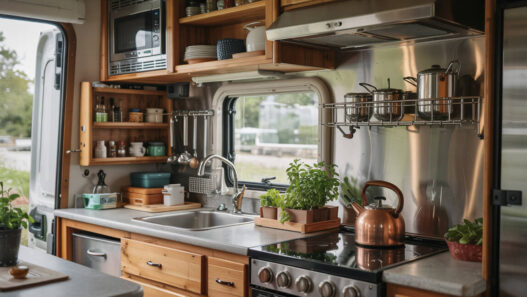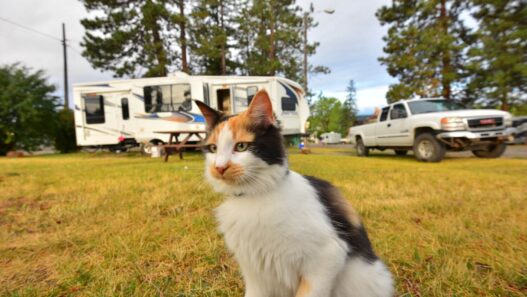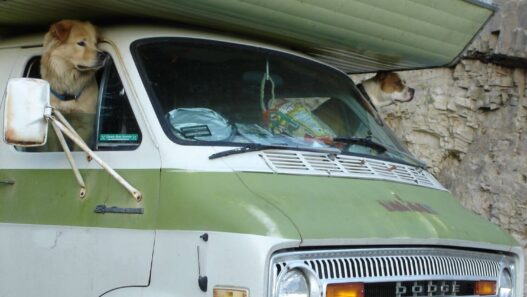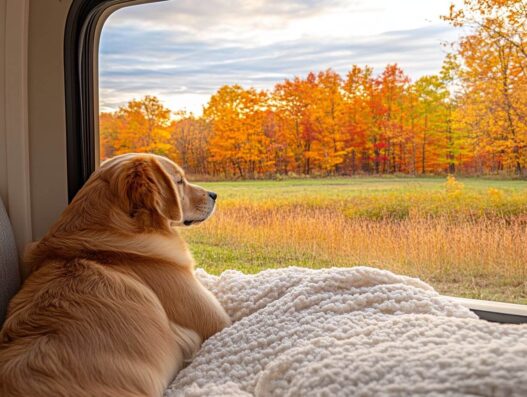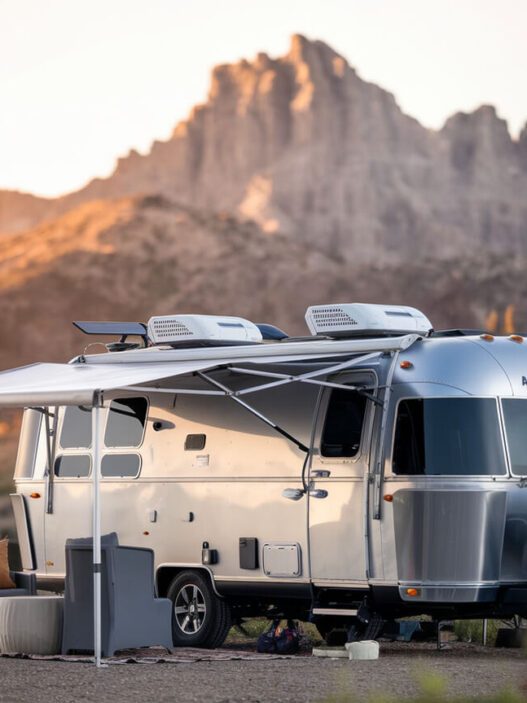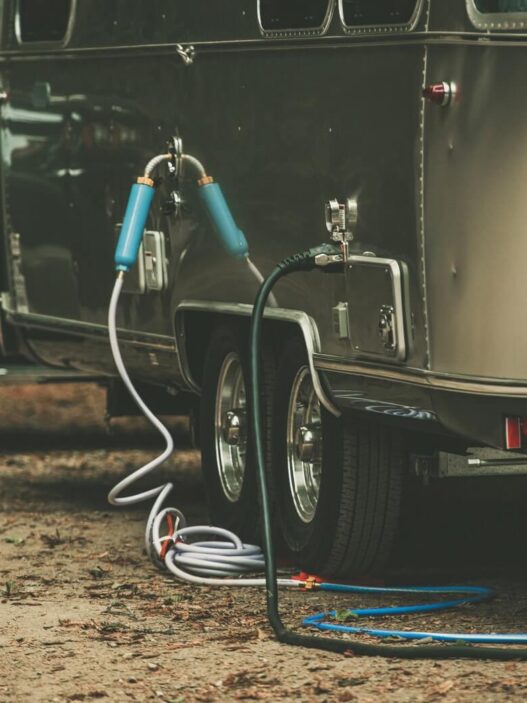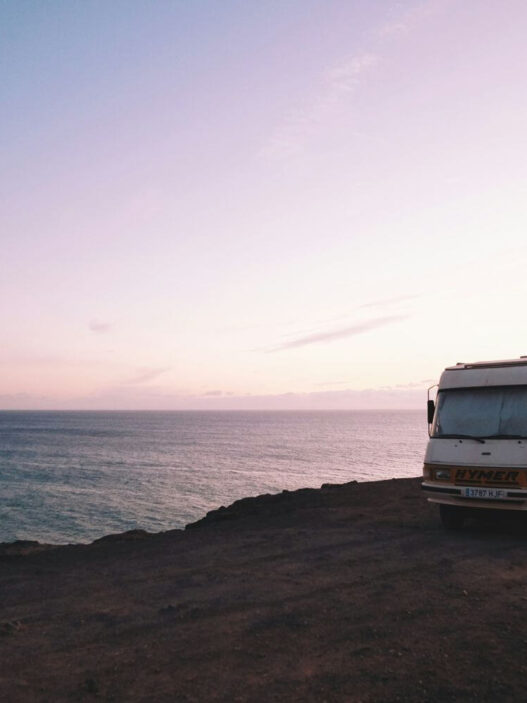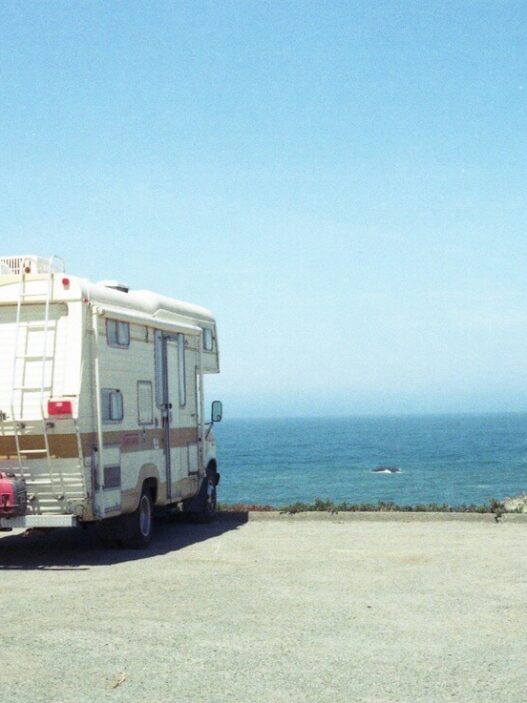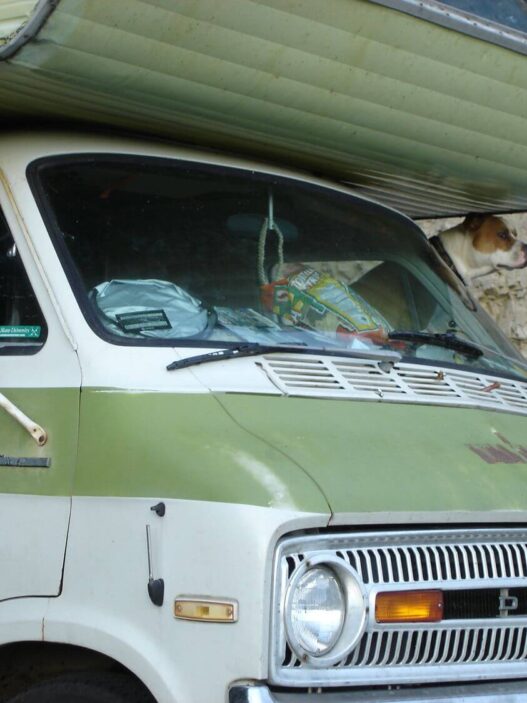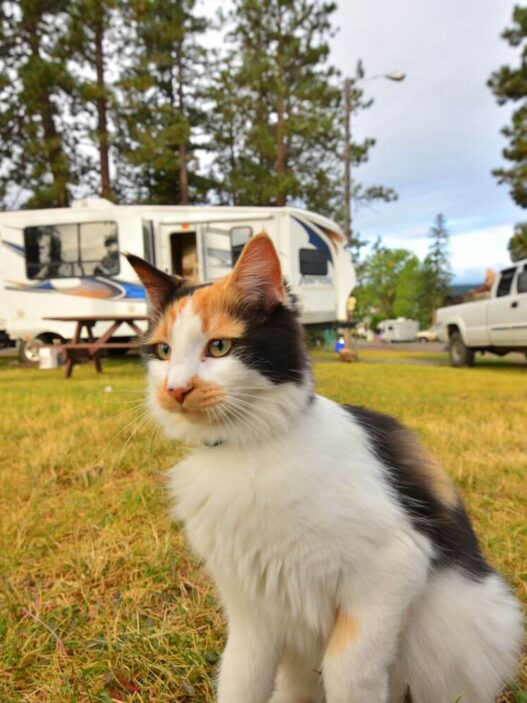Life on the road with your furry friend can be amazing, but there will be times when you need to leave your dog alone in your RV. Whether you’re grabbing groceries, enjoying a nice restaurant, or checking out attractions where dogs aren’t allowed, it’s important to know how to keep your pet safe and comfortable.
This guide will teach you how to safely leave your dog alone in your RV when you’re gone.
Understanding the Risks
Before we dive into solutions, let’s talk about what makes leaving a dog alone in an RV different from leaving them at home.
First, RVs can heat up very quickly in the sun. Without proper planning, temperatures inside can become dangerous for your pet in as little as 30 minutes. Even in cold weather, RVs present unique challenges because they’re less insulated than regular homes.
Your RV also faces other challenges. Power might go out, leaving air conditioning systems without electricity. Generators can stop working. Outside noises at campgrounds might stress out your dog. All these risks can be managed with good planning and the right equipment.
1. Make Your RV Dog-Friendly
The first step is to set up your RV with everything your dog needs to stay safe and comfortable. A good ventilation system that works even if the power goes out is essential.
You’ll also need reliable temperature monitoring equipment and backup power solutions. Make sure you have strong locks and security measures in place, along with window coverings to control sunlight and temperature.
Create a Comfortable Space for Your Dog
Your dog needs their own special area in the RV where they can feel secure and comfortable. Set up a cozy bed or crate in a temperature-controlled spot. Place multiple water stations throughout the RV so they always have access to fresh water.
If you’ll be gone for longer periods, consider creating a designated potty area. Make sure all loose items are secured so they can’t hurt your dog if the RV moves or shakes.
2. Know How To Manage Temperature
Understanding how to control temperature in your RV is about more than just running the air conditioner. Let’s look at what you need to know for every season.
Be Ready For Summer
Summer brings the biggest challenges for RV temperature control. Your RV can get 20 degrees hotter than the outside temperature in just 30 minutes. The key to summer safety is planning ahead. Always try to park in shaded spots, especially if you know you’ll need to leave your dog alone. Before you head out, make sure to run your air conditioner for a while to cool the space down extra.
Proper window management makes a huge difference in summer. Install reflective window coverings on any windows that get direct sunlight. Keep all window shades or curtains closed when you’re away. Setting up portable fans throughout your RV helps keep air moving and creates a more comfortable environment for your pet.
Prepare For The Winter
Cold weather brings its own set of challenges. RVs can get very cold very quickly because their walls are thin. Small space heaters can be a great solution, but make sure to choose ones with safety features that automatically shut off if tipped over. Adding thick curtains over windows and doors helps trap warm air inside.
Consider adding rugs throughout your RV during winter months. Not only do they help insulate the floor, but they also give your dog warm places to rest. For very cold days, a heated pet bed can provide extra comfort. Always keep some backup blankets stored away in case of power outages.
Choose The Right Air Conditioner
The size of your air conditioner matters more than you might think. An AC unit that’s too small won’t keep up on hot days, while one that’s too big will cycle on and off too frequently. Here’s a simple rule of thumb: for every 100 square feet of RV space, you need about 2,000 BTUs of cooling power. This means a 35-foot RV usually needs a 15,000 BTU air conditioner.
Many RV owners find that installing two smaller units works better than having one large one. This setup provides several advantages: you have a backup if one unit stops working, the cold air gets distributed more evenly throughout your RV, and you can run just one unit when full cooling power isn’t needed.
Control Humidity
High humidity makes it harder for dogs to cool themselves by panting, so controlling moisture levels in your RV is crucial. Running a dehumidifier during wet weather can make a big difference in comfort levels. Make sure to use bathroom and kitchen vents when cooking or showering to prevent moisture buildup.
Keep a humidity monitor in your RV so you can track moisture levels. In small spaces, moisture-absorbing products can help maintain comfortable humidity levels. These simple tools can make a big difference in your dog’s comfort.
Test Your System
Never leave your dog alone in the RV without first testing your cooling system thoroughly. Run it for several hours to ensure it maintains performance. Walk through your RV and check the temperature in different areas, as some spots might be warmer or cooler than others.
Before leaving your pet, verify your temperature monitor is working correctly, test your backup power system, ensure all fans are operating properly, and check that temperature alerts are set up on your phone.
3. Train Your Dog For RV Life

A well trained dog will handle alone time in the RV much better. Start by letting your dog spend short periods in the RV while you’re there. Make it fun with treats and toys. Slowly increase the time you’re away, starting with just a few minutes.
If your dog has anxiety about being alone, work with them gradually. Some dogs do better in a crate, while others prefer having more space. Pay attention to what works for your pet and adjust your approach accordingly.
4. Manage Your Time Away
How long you can leave your dog alone in your RV depends on several factors including their age and health, the weather conditions, their normal bathroom schedule, and the reliability of your RV’s systems.
Most dogs shouldn’t be left alone for more than 4 to 6 hours, even with perfect conditions. Older dogs or puppies usually need more frequent breaks.
When planning your schedule, consider your dog’s regular meal times and when they usually need bathroom breaks. Think about their exercise needs and plan around the best times of day for temperature control. Always plan to return sooner than you think you need to, giving yourself a buffer for unexpected delays.
5. Know Special Considerations For Different Dogs
Not all dogs handle RV life the same way. Understanding your dog’s specific needs will help you create the safest environment possible.
Senior Dogs
Older dogs require extra attention when staying alone in an RV. They often need more frequent bathroom breaks and can be more sensitive to temperature changes. Many senior dogs also get confused in new spaces, so keeping their routine as normal as possible becomes extra important.
Make your RV senior-friendly by adding night lights for better visibility and keeping water bowls easily accessible. Write down their medication schedule clearly, and consider using pet sitting services more often than you might with a younger dog. The predictability of a regular routine helps older dogs feel more secure when left alone.
Puppies
Young dogs bring endless energy and curiosity to RV life, which requires careful planning. Puppies need frequent potty breaks and might chew on RV fixtures out of boredom or anxiety. Their exploring nature means they can squeeze into small spaces you might not expect.
Before leaving a puppy alone, make sure to puppy-proof all low cabinets and spaces. Provide plenty of appropriate chew toys to keep them occupied. Using a crate or playpen can help prevent accidents and protect both your puppy and your RV. Start with very short periods alone and gradually increase the duration as your puppy shows they can handle it.
Breed Specific Needs
Different breeds come with different challenges in RV living. Flat-faced breeds like Pugs and Bulldogs need extra help staying cool and can’t handle humidity well. Consider providing cooling mats and positioning fans specifically for these breeds. They also require closer temperature monitoring than dogs with longer snouts.
Large breeds need more space to move around comfortably and might need help with RV steps. Make sure to provide elevated food and water bowls and check that your furniture can handle their size. Small breeds, on the other hand, get cold more easily and might need warm clothes in winter. They can find more hiding spots in an RV and are often more sensitive to outside noises.
Dogs with Medical Conditions
Dogs with health issues need extra preparation before being left alone. Keep their medical records easily accessible and write down their medication schedule clearly. Research veterinary clinics near your planned stops before you travel. If your dog needs regular medication while you’re away, consider whether a pet sitter might be a better option than leaving them alone.
Multiple Dogs
Having more than one dog in an RV requires careful consideration of their relationship. Think about how they behave when left alone together. Some dogs might play too roughly or make each other anxious when their humans are away. Make sure each dog has their own comfortable space to rest and easy access to water.
Creating separate activity stations can help prevent boredom and reduce conflict. Consider using cameras with two-way audio so you can check on them and offer reassurance if needed. Most importantly, make sure all dogs have access to cooling air flow and can’t accidentally block each other from comfortable spots.
6. Do Some Emergency Planning
Even with perfect preparation, emergencies can happen. Create a safety plan that includes contact information for nearby veterinarians and a list of friends or fellow campers who can help. Have clear steps written down for what to do if your RV loses power, and keep tools handy in case you need to break in if your locks malfunction.
Your emergency kit should include basic first aid supplies for dogs, extra water and food, battery powered fans, and a spare key with a trusted neighbor. Having these items ready can make a huge difference in an emergency situation.
7. Campground Considerations
Most campgrounds have specific rules about dogs. Before leaving your pet alone, learn about how long dogs can be left unattended and any rules about barking. Make sure you have all required documentation for your pet and understand any breed restrictions that might apply.
Tell your camping neighbors when you plan to leave your dog alone. Give them your phone number in case of emergencies. Many campers will gladly keep an ear out for any problems, creating an extra layer of security for your pet.
8. Go With An Alternative Option When Necessary
Consider practical solutions for times when leaving your dog alone isn’t ideal. Look into local pet sitters who can visit your RV or find doggy daycare facilities near popular destinations. Join RV groups to connect with other pet owners who might have helpful advice or be willing to help watch your dog.
Conclusion
Taking your dog on RV adventures can be one of life’s greatest joys, but it does require careful planning and preparation.
By understanding your dog’s needs, managing temperature effectively, having solid backup plans, and staying connected through modern technology, you can create a safe environment for those times when your dog needs to stay behind.



